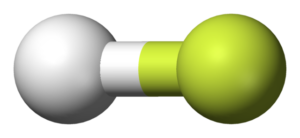Playlist
Show Playlist
Hide Playlist
Resonance: Examples – Electronegativity
-
Slides 05 Chemistry Basics Le Gresley.pdf
-
Download Lecture Overview
00:01 So here we have a couple of other examples of resonance. This is an allylic structure. 00:06 And for resonance to occur, there needs to be a group donating and a group accepting a pair of electrons. In this case, we can move the double bond – the carbon to the carbon, that’s a pi bond – and form another carbon-carbon pi bond. In this case, the positive charge moves from one carbon to the other, the reality being of course that we wouldn’t be able to detect this, we wouldn’t be able to see this. But this is the inherent stability of this allylic carbo-cation. The pi bond is the donor and the positively-charged carbon – or carbo-cation – is the acceptor. Normally, carbon does not necessarily form an ion, by which I mean it does: it’s just not very stable. So what tends to happen is it tends to react relatively quickly with something from which it can obtain electrons. So therefore our awareness of the existence of resonances is related to the apparent stability of something which, on the face of it, is thermodynamically unstable. 01:12 Another example of resonance is in the carboxylate ion. And we’ll come onto carboxylates when we talk more about the organic chemistry. Note though what we’re doing is we’re moving a negative charge to convert a single carbon-oxygen bond into a double carbon-oxygen bond and we’re placing a negative charge on the adjacent oxygen. 01:32 Now of course the reality is that these electrons are moving back and forth, back and forth all the time. The net result is that the typical way of drawing it, as you can see here shown after the equivalent (≡) sign, is that the electron density of that negative charge is distributed evenly between the two carbon-oxygen bonds. Again, it’s not something that you can isolate but it’s something that you can observe by virtue of knowing or being aware of acidity and knowing that this carboxylic acid is actually more acidic than it actually should be by virtue of the stability imparted by that resonance. O- does not typically form unless the charge can be stabilised. In this case, the charge is stabilised by resonance.
About the Lecture
The lecture Resonance: Examples – Electronegativity by Adam Le Gresley, PhD is from the course Chemistry: Introduction.
Included Quiz Questions
Which structural feature is necessary for resonance to occur?
- The presence of an electron pair donating group and an electron pair accepting group.
- The presence of halogen atoms in the molecule.
- The presence of a non-metal atom in the molecule.
- The presence of a transition metal atom in the molecule.
- The presence of a catalyst in the surrounding medium to alter the internal structure of a molecule.
Customer reviews
5,0 of 5 stars
| 5 Stars |
|
5 |
| 4 Stars |
|
0 |
| 3 Stars |
|
0 |
| 2 Stars |
|
0 |
| 1 Star |
|
0 |




